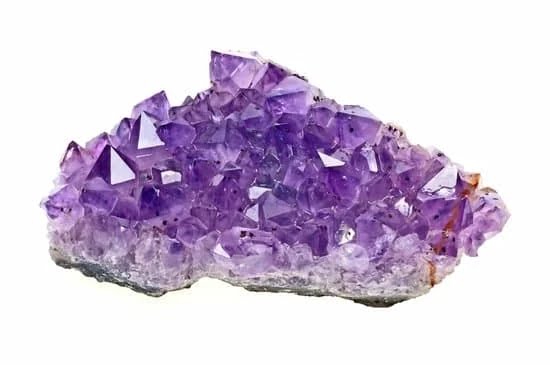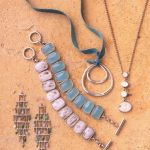Silver jewelry repairs are important for maintaining the quality and value of your favorite pieces. Professional jewelers often have the expertise and specialized tools to complete intricate repairs, including stone setting and engraving. However, do-it-yourself silver jewelry repair can be a great option too. This blog post explores different strategies to help you determine if it’s best to try DIY repairs or take your jewelry to a professional.
Simple Do-It-Yourself Repairs
For minor repairs that require no specialized tools, it is usually ok to attempt a DIY fix. Examples of jewelry damage that can typically be repaired at home include scratches on the tarnished surfaces of silver items, missing clasps on chains or necklaces, damaged ends on hoops or rings, split rings, small dents in bangles or bracelets, and bent prongs.
Professionals may advise you against DIY repairs in more complex cases such as when stones are loose or missing from their setting or pieces need re-soldering to close gaps between individual components.
Tips For Home Silver Jewelry Repair
If you decide to proceed with at-home silver jewelry repair here are some tips: Start by carefully removing any rocks that might not be held securely in their settings; this will help ensure they don’t fall out during cleaning or repair. It’s critical to provide adequate light and magnification so you can properly assess the damage for accuracy and proper tool selection.
Additionally use non-abrasive cloths specifically meant for polishing jewelry during metaling operations as rough cloths could create additional scratches and damages. Finally hold components like wires tightly between two fingers when soldering them together in order to prevent excess heat transfer which will cause damage; professional jewelers use tweezers instead of fingers while making these delicate adjustments when possible.
Conclusion – Summary of blog content
In conclusion, know your ability level before attempting silver jewellery repair at home so you don’t risk further damaging your piece beyond repairability or voiding its warranty if one exists. You should also ensure that all materials used during repair are suited for silver specifically since other metals could permanently discolor it when heated excessively during soldering operations.
Knowing whether DIY repairs are appropriate will help keep your beloved pieces displaying their original beauty so they can be enjoyed for many years to come.
Types of Silver Jewelry Repair
Silver jewelry repair is a common procedure that many people find themselves needing, particularly due to the fragile nature of silver and how easily it can break or become damaged. Silver jewelry repairs involve any kind of damage that may have occurred over time, from simple cleaning to complex alterations and restoration. With proper care and maintenance, most silver jewelry pieces can be saved with a timely and well-executed repair procedure.
The most common type of silver jewelry repair involves cleaning and polishing the item in order to restore its original sheen. To start this process, use a soft cloth lightly dampened with warm water to wipe away grime, dirt and dust accumulations on the item’s surface.
This should be followed by using a soft-bristled toothbrush at the joints where those tiny debris tend to accumulate. Any remaining tarnish can then be remedied through the use of specialized cleaning solutions designed for silver items – products such as “silver dips” or milder homemade solutions made from salt or baking soda are suitable options in this case.
If aside from cleaning there are more minor repairs needed, they often involve slightly heating up parts with a soldering iron to refasten lost pieces or tightened loose ones back into place. More difficult repairs include when an item needs to undergo structural work due to damages caused by events such as accidental piercings or impact breaks; in those cases it’s best if these types of more extensive repairs are carried out by an expert craftsman specialized in metalworking.
And last but not least, professional restorations may also be initiated when items’ appearance has been significantly affected by tarnish-related problems, such as cloudiness or bluish hues resulting from improper storage practices over time which cannot be resolved through mere cleansing procedures anymore. While sometimes costlier than other simpler alternatives, restorations are very effective at bringing back items’ natural beauty back in all its glory for many years ahead.
Gathering the Right Tools
Silver jewelry is a popular choice due to its delicate and attractive appearance, but the fact that it is made of a soft metal means that it can be subject to wear and tear. If you find yourself in need of silver jewelry repairs, you’ll want to make sure you have the right tools for the job so as not to cause any further damage.
The most essential tool for repairing silver jewelry is a jeweler’s saw. This tool consists of a small frame with a blade threaded through it.
The saw frame allows you to position the blade properly during operation, and it also comes with different size blades to facilitate cutting different sizes of materials. A hand drill or dremel are other useful items if drilling any holes or needing to clean out any particles since these tools usually come with various attachments for engraving or polishing purposes.
You’ll also want to get some clamps which can help hold pieces of silver together while they are being worked on. Pliers overall will also make life easier when completing delicate tasks such as bending, stretching and re-shaping sections of silver jewellery. Lastly, several sheets of sandpaper in varying levels of grit will protect the already finished piece from further scratches or abrasion before putting it away after completion.
Now here comes the tricky part-sourcing these necessary items. Depending on your level of comfort with your repair journey, you may wish to consult with local professionals such as jewelry stores or even pawn shops who may have purchase agreements in place with silversmiths known for their quality workmanship should repairs be needed for someone unavailable in that store’s network of experts.
On the flip side, there are also many online suppliers from whom one can buy these same types of supplies directly from specific manufacturers if preferred too, many featuring kits specifically designed for silver jewellery.
It’s wise however should you go about purchasing various tools on their own that you ensure all objects purchased meet industry standards and specificity requirements applicable depending on your task at hand; though general purpose objects should suffice overall still regardless but only if you’re confident enough in doing so first prior.
However acquired though, having the right tools ahead of time and being comfortable employing them during your silver jewelry repair endeavour is key; likewise too double-checking safety precautions always no matter what too. Once your supplies arrive however just take your time throughout whilst focusing upon exactness like filing et cetera until genuinely satisfied then upon completion enjoy wearing that now beautiful repaired piece once again soon afterwards hopefully by following these steps closely whichever route chosen eventually nonetheless.
Cleaning the Jewelry
When it comes to restoring silver jewelry, cleaning it correctly is the first yet most important step. After all, you never want to start a repair when your jewelry still has dirt and other build-up on it. Having a good quality cleaner is essential – especially if your silver pieces have significant tarnishing.
If your pieces are lightly soiled use warm water and mild dish detergent, then lightly rinse and dry with a clean cloth after cleaning. For heavier tarnish or dirt build-up try using a commercial polish product for silver jewelry such as Goddard’s Pewter & Silver Polish or Wright’s Silver Cream. These types of cleaners will typically include an abrasive agent that helps to remove more of the dirty accumulation without affecting the finish underneath.
Removing Tarnish – How to get rid of yellow discoloration
Once the dirt has been removed it is time to address any tarnishing that the silver has accumulated. Typically this can be done in one of two ways; either with chemical agents or mechanical action (buffing). Chemical agents are by far easier but tend to take longer than mechanically buffing them off; this will depend on how bad the tarnish actually is.
For light tarnishing you can use a silver polish foam or paste which contain metals salts combined with surfactants so they can easily be used by hand on items such as silverware, small jewelry and even larger items like picture frames. You simply rub it in gently, polish lightly then rinse with warm water and dry instantly before polishing again with soft cloth for shine and luster.
Repairing Damage – Tips for smaller scratches
When dealing with scratches or dings on your silver pieces there are some simple things you can do at home yourself without having to replace the entire piece itself. Very small scratch marks should not be too difficult to remove by simply buffing them out using either fine sandpaper (1000+) grade wet/dry paper type or a jewelers cloth/wheel set up specifically designed for polishing metal pieces back into shape.
Be sure when doing this though that you don’t over buff causing deeper etching onto the surface causing permanent damaged marks. It takes some practice but once you get used to seeing what depth of scratch mark requires what amount of pressure applied while buffing you will get better at improving the overall look of your piece back into near original condition if not fresh out of package new one.
Assessing the Damage
When assessing the damage to your silver jewelry, the first step is to examine the item thoroughly. It can help to use a magnifying glass or loupes as this will allow you to identify any cracks, chips, missing pieces and any signs of tarnish. Silver is a soft metal, making it more vulnerable than many other precious metals for damages such as these.
Additionally, check for broken prongs if your jewelry piece has stones attached as these can be easily missed without close inspection. Afterward, consider cleaning the damaged jewelry piece softly with warm water and mild liquid soap in order to have a better view of the extent of the damage.
When attempting to repair silver jewelry it’s important to know the boundaries of what is safe for you to do at home and when it’s best left to professionals. Simple DIY repairs like replacing small cracked stones or slight reshaping of bent pieces can often be done safely and successfully at home with a few tools found around most households – such as pliers, hammer and small files – although much depends on the type and extent of damage.
Larger duties such as soldering joints, which involves intense heat and complex manual work should be reserved only for experienced jewelers or silversmiths who can confidently identify the right approaches and employ necessary safety precautions.
If there are any damages involving stones or prongs holding them in place then take special caution due to their delicate nature – tiny cracks can easily go unnoticed leaving room for future details so if unsure about anything seek professional assistance in order not put yourself at risk of further damages or losses.
In case any serious damages are seenyou should consult a professional silversmith capable of handling intricate repairs – many reliable jewelers offer specialized services for restoring damaged silver pieces back into pristine condition.
Soldering
Soldering is a very popular way to repair silver jewelry. It is usually used when the metal has been broken and needs to be joined together again. To solder silver jewelry, several steps need to be followed to ensure the repair is done properly.
Firstly, you will need to gather all of your materials such as silver solder wire, flux and an appropriate soldering iron with a high enough temperature for the project. All of your tools and materials should be laid out before beginning any welding work on the jewelry in order prevent any accidents from occurring.
Once all the tools are gathered, it’s important to prepare both pieces of metal for soldering. This includes cleaning off any dirt or grease on both pieces of broken metal before joining them together. You may also want to lightly file or sand off the edges so that it’s easier for the pieces to fit back together perfectly once they are heated up during soldering.
Before beginning any soldering work, one must also remember wear safety glasses or another form of eye protection as there can be small particles that may fly up from within during heating process.
As safety should always be a top priority when working with hot metals, take extreme caution when applying heat while soldering – and keep in mind that certain types of soldered joints may need more time than others due heat resistant propertiesunique resistance properties in each piece being repaired.
Once all the precautions are taken are taken and you have reached a successful joint after heating, allow some time cool and inspect finish ensuring there are no weak spots in your repair job before wearing or gifting away.
Filing and Polishing
When it comes to repairing silver jewelry, the process starts with filing and polishing. It is important that file and polisher types are compatible with the metal you will be working on. Silver is a soft metal, so use only files and polishers designed for use on softer metals like silver or gold.
There are two main types of files – bastard-cut files that feature coarse teeth ideal for initial abrasive filing and second cut or smooth-cut files with finer teeth useful for refining surfaces once the general shape has been achieved. By using these various files, one can remove excess material from the piece being repair with precision.
After filing is complete, one must use a suitable polisher to give it an even finish and bring out its shine and luster. Polishers contain buffing compounds which when rubbed against the details of the jewelry react chemically to leave a bright and clean finish meaning that in many cases, machines may not even be necessary at all.. One should take caution while applying such compounds as they may rub away thin layers of the silver if applied too hard.
If this ne happen accidentally always remember to check a hidden area first while determining which level of pressure is required as excessive rubbing can also cause discoloration due to heat buildup.
Having taken all safety precautions, then you are ready to put your repaired piece back together. A good way to start finishing off your masterpiece is by examining closely how other pieces have been put together so you can better understand what happens behind those pieces of art; this allows you to pay attention to the detail instantly before reassembling yours in order for it to look exactly how it originally did or even better.
Always make sure each part is securely bonded so it does not become loose over time as every design needs some extra touches adding security as well so that small parts do not go missing again after replacing them in their rightful places within the jewelry item itself once repaired.
Finishing Touches
One of the most common dilemmas for many people is learning how to repair silver jewelry. While silver jewelry is known for its shiny and durable nature, it’s also subject to tarnishing and corrosion over time. The good news is that learning how to repair silver jewelry can be extremely simple if you follow a few basic steps.
Start with the basics – cleaning your silver jewelry is step number one when it comes to setting out to repair silver pieces. Reaching for commercial cleaning products specifically designed for use on silver can help restore your pieces’ former luster.
Always take into account any stones, gems, or other details that may be a part of your jewelry piece when selecting a cleaning product as these materials may discolor if exposed to certain metals or chemicals found within some silver cleaners. Also ensure you are working in a controlled space on soft surfaces that will not scrape or scuff your treasured items.
Once your cleaned jewelry has been thoroughly dried, you can move into more advanced methods and materials. Polishing cloths, pastes, and powders have all become popular items for restoring shinier tones and finishes back to silver pieces both old and new alike; these approachable supplies often usually omit any harmful solvents or ingredients which could damage fragile components such as those mentioned above.
You can also utilize chemical oxidation applications such as liver of sulfur when looking to apply darker patinas or tints to pieces; while this process should be done with caution if used incorrectly this technique could result in catastrophic damage but when used properly offers a unique coloration look that many jewelers favor on their creations.
Finally, don’t forget to finish off repairing any silver jewelry by adding protective coating products either sprayed on or applied with cloths after polishing sessions have been completed; these coatings act as barriers against environmental conditions such as moisture and air-borne particles which cause rusting and oxidation so they should be taken into consideration during restorations.
Conclusion
When looking to repair silver jewelry, there are a few key points one should keep in mind. First, use a mild detergent with warm water and a soft brush to clean the silver jewelry before attempting any repairs. Second, for minor repairs like scratched or dents, use special polishing solutions and buffing equipment as silver polish can damage both the metal and stones of your jewelry.
Third, if you are dealing with something more delicate such as clasps that need replacment or broken chains, take the piece to a professional jeweler who is experienced in handling fragile jewelry items. Seventh, remember that silver is porous and fades easily so make sure you keep it stored safely away from direct sunlight and humidity when not being worn.
Finally, when making repairs to your own silver jewels it is important to be mindful of any established warranty periods on items purchased from authorized jewelers and retailers as some may cover damages caused by normal wear and tear. Ultimately, it’s best to seek professional assistance whenever possible if one finds themselves outside their area of expertise.
Professional jewelers are able to assess any complex damages present with specialized tools meant for handling precious metals like silver which adds confidence for expensive repairs you might face down the line. Shopping around for quotes from trusted sources can also allow customers to see what works best within their budget without sacrificing quality service or protection from warranties needed down the line.
On the other hand of both shopping around or going directly with a reliable source instead of doing all DIY repairs yourself, proper care should still always be taken whilst wearing or storing precious jewelry items in order to protect against potential loss or theft no matter where one finds themselves located inside or outside private property grounds.
Therefore Always be careful when it comes to taking on complicated practical tasks alone and don’t hesitate to trust professionals who have dealt often enough with these types of issues over time that they been able to master originally fickle problems associated with delicate metals known as silver jewelry.

Welcome to my jewelry blog! My name is Sarah and I am the owner of this blog.
I love making jewelry and sharing my creations with others.
So whether you’re someone who loves wearing jewelry yourself or simply enjoys learning about it, be sure to check out my blog for insightful posts on everything related to this exciting topic!





